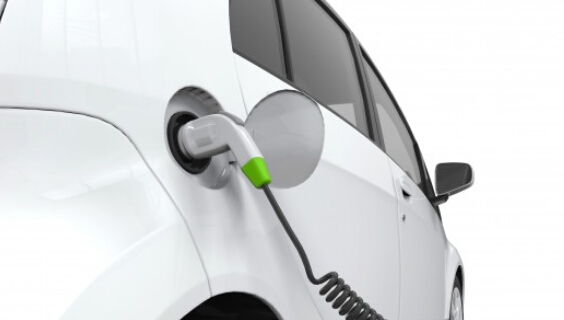If nanotechnology scientists led by the Queensland University of Technology (QUT) are on the right track, it may one day be a reality as cars are powered not by batteries, but their body panels – inside which are sandwiched a new breed of supercapacitors.
Imagine an electric car with no batteries. Electric cars have a lot of advantages. They don’t directly use fossil fuels, they have zero emissions, and the high-end ones perform like a supercar, with an acceleration that leaves your back teeth at the starting line. The drawback is that they depend on very heavy batteries. At the low end, there are lead-acid types that weigh a staggering amount, while the high end vehicles use lithium-ion batteries that aren't much lighter.
In theory, lightweight supercapacitors should do a better job with their ability to hold much higher charges, but in practice, aren't quite there yet. It’s a matter of energy density. Lithium-ion batteries have a lot of energy, but are limited in how fast they can discharge it. Supercapacitors can release energy in large bursts, but don’t store as much as a Li-ion battery. The trick is to combine the two in the short term, while figuring out how to store more in the supercapacitor in the long term.
QUT is working on new lightweight supercapacitors, which are a thin, strong, high-energy density film made of two all-carbon electrodes sandwiched around an electrolyte. This film is intended to be set in car body panels, roofs, doors, bonnets and floors. The idea, in the short term, is to combine them with Li-ion batteries, where the supercapacitors can store enough energy to charge the battery in minutes. Vehicles need an extra energy spurt for acceleration and this is where supercapacitors come in. Supercapacitors hold a limited amount of charge, but they are able to deliver it very quickly, making them the perfect complement to mass-storage batteries. They offer a high power output in a short time, meaning a faster acceleration rate of the car and a charging time of just a few minutes, compared to several hours for a standard electric car battery.

According to QUT, a supercapacitor-powered car would have other advantages. For example, because supercapacitors use carbon and not rare earths like lithium, they’re much cheaper to produce and less toxic. Supercapacitors and batteries are already being used in cars, which bring the weight down, but QUT sees a car powered by body panels inside of five years.
In the future, it is hoped the supercapacitor will be developed to store more energy than a Li-ion battery while retaining the ability to release its energy up to 10 times faster – meaning the car could be entirely powered by the supercapacitors in its body panels, according to Postdoctoral Research Fellow Dr Jinzhang Liu. After one full charge this car should be able to run up to 500 km (310 mi) – similar to a petrol-powered car and more than double the current limit of an electric car. The technology could also be adapted for smart phones with supercapacitor cases quickly charging the phone battery.
Contact:Viya
Phone:+86.13967651636
Tel:+86.576-87209817
E-mail:sales@yuanweicn.com
Address: Science&Technology Zone,Kanmen,Yuhuan,Zhejiang,China.